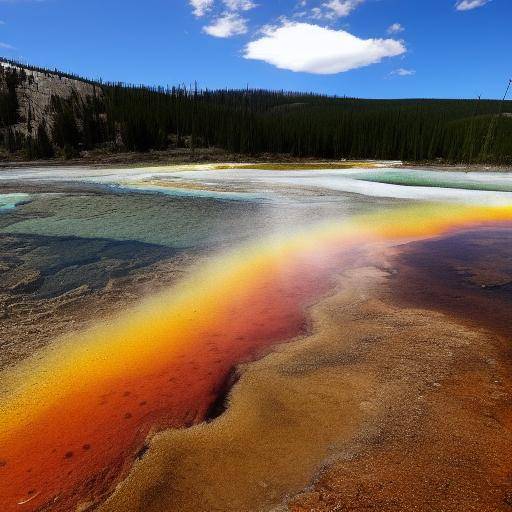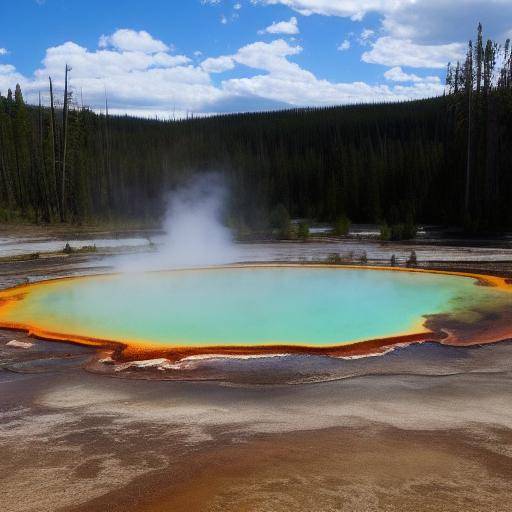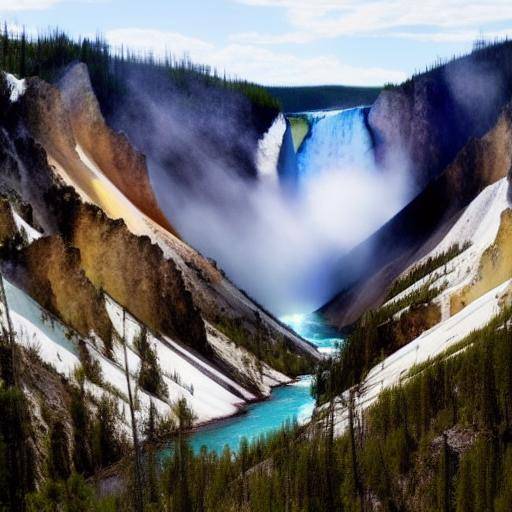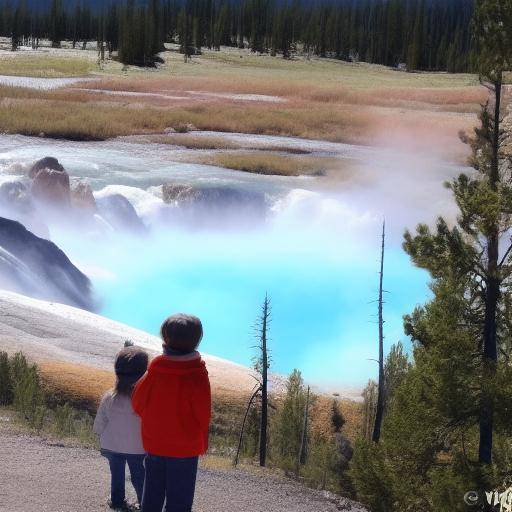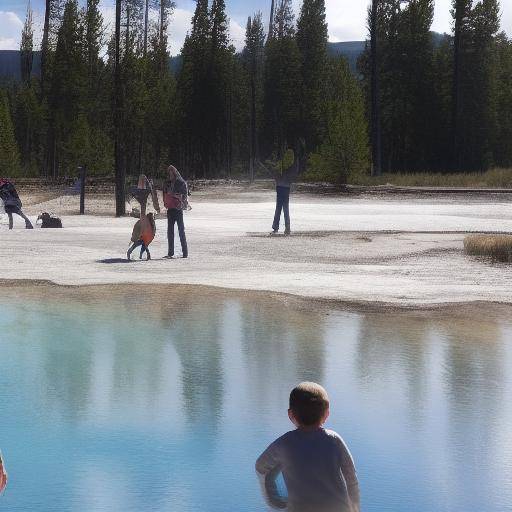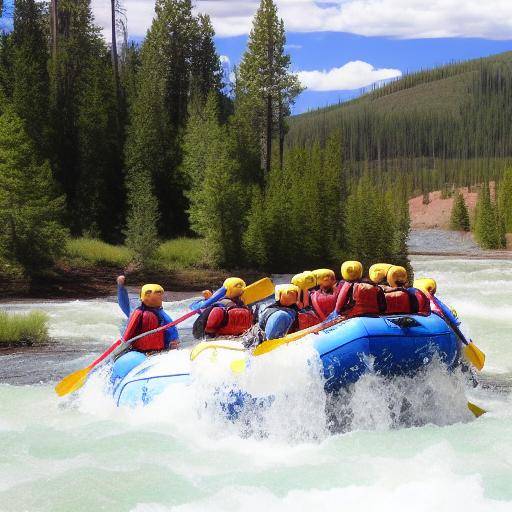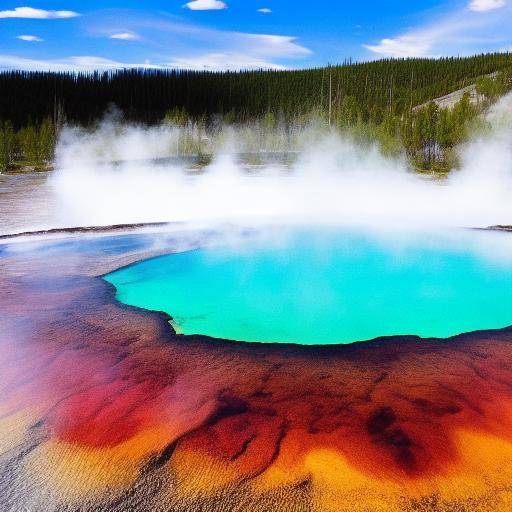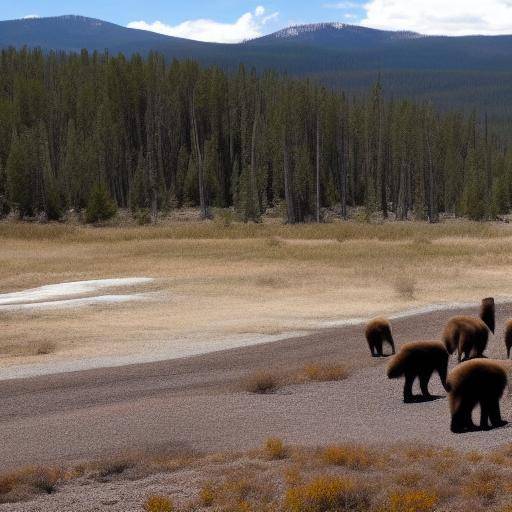
Introduction
The Yellowstone National Park is erected as a conservation epicenter, protecting diverse ecosystems and native species in the vast landscape of the United States. This article explores the crucial role of Yellowstone in environmental conservation, as well as its contribution to ecotourism in the USA. What makes this park so unique? How has it influenced the conservation of endangered species? Join us on this journey through the beautiful nature of Yellowstone and the efforts dedicated to its preservation.
History and Background
The Yellowstone National Park, established in 1872, marked a crucial milestone as the first national park in the world. His creation laid the foundations for the conservation of natural areas throughout the planet, opening the way for the modern notion of preserving nature. Since then, Yellowstone has become an emblematic example of successful conservation, fostering the resilience of its ecosystems and species.
The park houses a rich history of preservation, from the reintroduction of wolves to the protection of bison, bald eagles and grizzly bears. These efforts have shown that effective conservation is possible, even in challenging environments. In addition, the thermal waters, geysers and stunning landscapes make Yellowstone a world-renowned tourist destination, combining conservation with ecotourism in the USA.
Analysis in Deep
Despite significant achievements in Yellowstone, conservation continues to face complex challenges. Climate change, demographic pressure and other external forces threaten the stability of ecosystems. However, several conservation initiatives have emerged to counter these threats, highlighting the importance of collaboration between the government, non-profit organizations and the local community.
Ecotourism in the US has been a vital component in supporting the conservation of Yellowstone. The responsible and respectful visit that promotes ecotourism not only brings enriching experiences to travelers, but also generates revenues that finance conservation and environmental education projects. This balance between promoting sustainable tourism and preserving ecosystems is essential for the future of Yellowstone and its inhabitants.
Comprehensive review
Conservation in Yellowstone offers valuable lessons that can be applied in different contexts around the world. From monitoring strategies to species reintroduction programs, successful practices in Yellowstone serve as inspirational models for other conservation projects. Public awareness and commitment to conservation also play a key role in maintaining healthy ecosystems.
Comparative analysis
By comparing Yellowstone to other ecotourism destinations in the US, you can appreciate its uniqueness and contribution to environmental conservation. While some national parks prioritize the preservation of natural landscapes, Yellowstone stands out for its particular attention to the protection of native species, making it a living laboratory for conservation. This combination of conservation and ecotourism offers a powerful model that can inspire other sustainable tourism initiatives.
Practical Tips and Accessible Tips
If you are planning a visit to Yellowstone or interested in supporting the conservation of native ecosystems and species, here are some practical tips:
- Plan your trip with tour operators who have sustainable practices.
- It contributes to conservation through donations to organizations dedicated to the protection of Yellowstone.
- Educate others about the importance of preserving nature and promoting responsible tourism.
Industry Reflections and Expert Reviews
Conservation and tourism experts highlight the importance of preserving places like Yellowstone to ensure long-term sustainability. Their perspectives and knowledge enrich the understanding of the challenges and opportunities facing conservation today. Its contribution is essential to design effective strategies that safeguard biodiversity and fragile ecosystems.
Case Studies and Real Life Applications
The experiences and learnings derived from conservation in Yellowstone extend beyond the borders of the park. Various communities and projects around the world have identified successful conservation practices in Yellowstone and implemented them in their own environments, generating positive impacts on the preservation of nature.
Future Trends and Predictions
In the face of continuing environmental challenges, there is growing interest in the Yellowstone conservation model and its relationship with ecotourism in the USA. It is predicted that these integrated approaches will gain greater relevance in the future, serving as benchmarks for the sustainable management of protected areas and the promotion of conscious and responsible tourism.
Conclusions
Conservation in Yellowstone not only protects the natural beauty of the park, but also exemplifies how ecotourism in the USA can contribute to the protection of native ecosystems and species. As we enter the future, it is crucial to recognize the intrinsic value of preserving natural spaces and the importance of fostering sustainable tourism that benefits both nature and local communities.
Frequently asked questions
What are the biggest challenges for conservation in Yellowstone?
Conservation in Yellowstone faces challenges such as climate change, invasive species management and the balance between nature preservation and tourism activities.
How can I support conservation in Yellowstone as a visitor?
You can contribute by donating to conservation organizations, respecting park regulations, and choosing tour providers that promote sustainable tourism.
How has conservation impacted on Yellowstone in the recovery of endangered species?
Thanks to conservation efforts, species such as the grey wolf and the bison have experienced significant advances in their recovery, showing the positive impact of actions taken in the park.
What is the role of ecotourism in the conservation of Yellowstone?
Ecotourism plays a key role in generating environmental awareness, supporting the financing of conservation projects and encouraging the active participation of visitors in the protection of the park.
How can you balance tourism with conservation in a place as iconic as Yellowstone?
The balance between tourism and conservation implies the implementation of policies that govern the flow of visitors, environmental education, and the promotion of sustainable tourism practices.
What are the future challenges that conservation in Yellowstone should address?
Conservation in Yellowstone will face challenges such as managing urban expansion in areas surrounding the park, protecting migratory corridors and adapting species to changing environments.
This deep analysis of conservation in Yellowstone and its link to ecotourism in the US highlights the essence of preserving the natural legacy for generations to come. Recognizing the interdependence between conservation and sustainable tourism is essential to ensuring the protection of native ecosystems and species that, like Yellowstone, represent the unrivalled wealth of nature.

